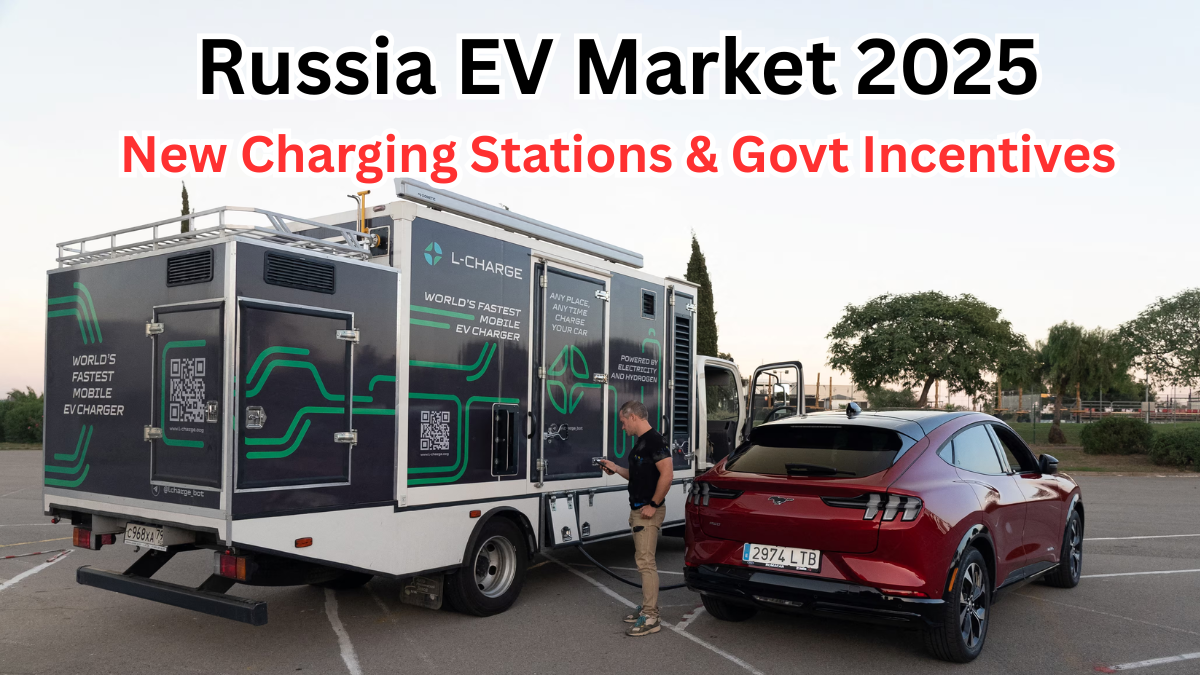The Russian electric vehicle (EV) market is experiencing a significant transformation in 2025. With increased government support, enhanced charging infrastructure, and growing consumer interest, the nation is steering towards a more sustainable and eco-friendly transportation system.

Key Highlights of Russia’s EV Market in 2025
-
Government Incentives: The Russian government has allocated significant funds to subsidize the purchase of charging equipment, aiming to boost the development of EV charging infrastructure.
-
Expansion of Charging Stations: Efforts are underway to increase the number of public charging points, addressing the growing demand from EV owners.
-
Rise in EV Sales: Over 20,500 new EVs were sold between May 2023 and April 2024, marking a 350% rise from the previous year.
Charging Infrastructure: Building the Backbone
Government Initiatives
-
Subsidies for Charging Stations: Financial support is provided to individuals and businesses for the construction of charging stations, helping reduce installation and operational costs.
-
Standardization of Charging Equipment: Regulations have been introduced to standardize connectors used in charging stations, ensuring compatibility across different EV models.
Technological Advancements
-
Smart Charging Solutions: Adoption of smart charging technologies optimizes energy consumption and reduces peak electricity demand.
-
Fast-Charging Stations: Fast-charging stations are being established along major highways, reducing charging time and enhancing convenience for EV users.
EV Market Growth: Trends and Projections
Sales Surge
Between May 2023 and April 2024, over 20,500 new EVs were sold in Russia, a 350% increase from the previous year. Chinese brands, such as Zeekr, have become dominant players in the market, accounting for more than half of these sales.
Market Share by Brand (May 2023 – April 2024)
| Brand | Units Sold | Market Share |
|---|---|---|
| Zeekr | 8,000 | 39% |
| Evolute | 2,000 | 10% |
| Moskvich | 1,000 | 5% |
| Others | 9,500 | 46% |
Data Source: Autostat
Environmental Impact
-
Reduction in Emissions: The introduction of electric buses in Moscow has led to a decrease in CO₂ emissions by approximately 130,000 tons between 2018 and 2023.
-
Sustainable Transportation: The shift towards electric vehicles and buses is contributing to cleaner air and a reduction in the country’s carbon footprint.
Future Outlook: What Lies Ahead?
-
Increased Production: The Russian government plans to produce 11,000 electric vehicles in 2025, with a target of 54,250 by 2030.
-
Enhanced Charging Network: Expansion of the charging infrastructure is expected to keep pace with the growing number of EVs, ensuring accessibility and convenience for users.
-
Policy Support: Continued government incentives and policies will play a crucial role in accelerating the adoption of electric vehicles across the country.
Frequently Asked Questions (FAQs)
1. What government incentives are available for EV buyers in Russia?
The Russian government offers subsidies for the purchase of electric vehicles, as well as financial support for the installation of charging stations.
2. How many public charging stations are there in Russia?
As of 2021, there were around 400 public charging stations in Russia.
3. Are there any Russian-made electric vehicles?
Yes, brands like Evolute and Moskvich are producing electric vehicles domestically.
4. What is the government’s target for EV production by 2030?
The government aims to produce 54,250 electric vehicles by 2030.
In conclusion, the Russia EV Market 2025 is witnessing significant growth, driven by government incentives, expanding charging infrastructure, and a shift towards sustainable transportation. While challenges remain, the country’s commitment to electrification is paving the way for a greener future.
Click here to learn more